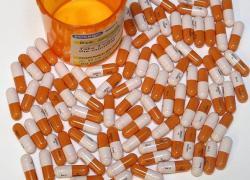By Robert Rowley, MD
By Robert Rowley, MD
One of the unintended consequences of moving healthcare onto Electronic Health Records (EHRs) has been an increase in time spent reviewing a much-increased volume of messages for the clinician. EHRs were supposed to simplify and streamline the in-office and in-hospital workflows, but what has happened instead has been “notification overload.” A recent article published in JAMA showed that, for primary care physicians, managing EHR notifications costs about an extra hour of work per day. In a fee-for-service environment, such additional workload burden is uncompensated, adding to burnout.
Granted that EHRs make it much easier for elements of clinical information about their patients to be seen – everything from lab reports, imaging reports, correspondence from other clinicians, medication refills, forms from home health and other agencies needing review and signature, and messages from patients – the question remains: is this the right workflow for all this information? A legitimate fear from clinicians is that, now that all this information is available, there is liability if something is missed. So the default workflow is that everything must pass in front of the eyes of the physician.
Layered on top of this are other workflows that typically involve other staff as well. This includes things like prior authorization for intended procedures, referrals, or medications. It also includes reviewing population dashboards to see how your patient population is faring when measured against certain criteria – these kinds of things become increasingly important as we move from a fee-for-service to a value-based payment system. Often, staff uses IT tools to collect this information, but then it needs to be passed in front of the eyes of the physician.
Is this the future of medicine?
Assuming that EHRs become better at being documentation-collection devices, and even if that task becomes quite fast and facile, there is still the work burden of reviewing the ever-increasing tide of “notifications,” and doing things about patient populations not being seen today. Is that the best use of physician skills and time?
Clearly, no.
The most important things that clinicians do is establish long-term trusted relationships with patients, and help interpret and bring meaning to a mountain of data that can be overwhelming. Physicians are assumed to have access to all the data (which, as we have seen in a fragmented system where health data is broken into institution-centered silos, is not often true), and can bring that into the right context for the individual patient.
There are two areas of technology which can help free the clinicians from the data-entry and data-review burdens, and allow them to do what they do best (and to do what is often the reason such people went into medicine as a career in the first place).
(1) Automation of care plans
One area where much of the information-processing burden can be lifted is through Artificial Intelligence (AI) assisted Care Plan creation. If the health data about a patient were collected and accessible in a unified, longitudinal data store, AI can be used to identify patterns in a given patient’s case, compare it with patterns found with others, take into consideration all the health-plan-specific preferences (medications, preferred providers, etc.), and create a unified Care Plan. That would be the basis of automatic authorization, order creation, and removing roadblocks in the pathway to getting to definitive care.
When shared between providers, health plans, patients, and other agencies (such as home health agencies, or care management providers), the need to “review, sign, and send back” piles of daily orders would go away. The physician can review the proposed care plan in a more overall way, and all the “notification management” burden would go away – after all, the need to review, sign, and send back each step of a process is based on the presumption that every care provider is in a separate data silo and no information is shared. The regulatory environment which has driven these requirements are likely to change once the technological sharing platforms become a day-to-day reality.
(2) Effective patient engagement tools
Another way in which distractions from meaningful clinical practice can be reduced is by creating a new generation of effective self-management patient-facing dashboards (web apps, mobile apps, wearable device apps). EHR patient portals represent a first step in this direction, but suffer from the limitation of showing only what is known in a given clinician’s practice, and have limited utility – generally simply displaying test results, downloading health education resources, allowing scheduling, and providing a communication channel with the clinician. The patient is fairly passive in these processes, and does not help reduce the “notification overload” that clinicians face. In fact, it may add to it.
What we need is a new generation of self-service and self-management apps, which can automatically synthesize data from EHRs (of all one’s physicians and hospitals), self-entered or survey data, as well as consumer-facing device data (which currently reside in consumer-side silos). The AI-assisted Care Plan can be displayed in consumer-friendly ways that can encourage and guide progress towards the goals, and overcome barriers to adherence.
Of course, this presumes patients will want to become engaged in the apps that help monitor and guide their health. Many will do so, many others will not (until some crisis or event occurs). That’s OK. The tools need to be there, need to become something trusted that includes their physicians and others, and need to be automated in ways that reduce that needless “notification burnout” that clinicians face.
***
So, how do we overcome “notification overload” in healthcare? We need the right kind of tools. We need tools that can automate the complex interdisciplinary workflows that result in much of the notification burden. AI-assisted care plan creation, sharing platforms to involve all stakeholders (physicians, home health agencies, care coordinator nurses, patients, and health plans), are a part of the answer. Regulatory and policy changes (within institutions and within health plans) will be needed to facilitate this, once the tools are available. Integration with EHRs will help, though the role of EHRs will change – however, the fact is that physicians are in their EHRs all day and therefore the new generation of tools will need to be embedded in the EHRs that clinicians use.
We will also need better, more powerful patient/consumer engagement capabilities, which enable more active participation (beyond the passive connection which is currently the norm for EHR-associated patient portals). Again, AI-assisted synthesis of care plans, presented to patients in consumer-friendly ways, will be the long-term path. This new marketplace of apps will need the same sharing platform in order to reach its potential.
That is the future we see at Flow Health. That is why we are building the foundational sharing platform, the Operating System for Value Based Care, that is needed in order for the long-term solutions to our current dilemmas to emerge.
This post first appeared at HealthStandards.com.






